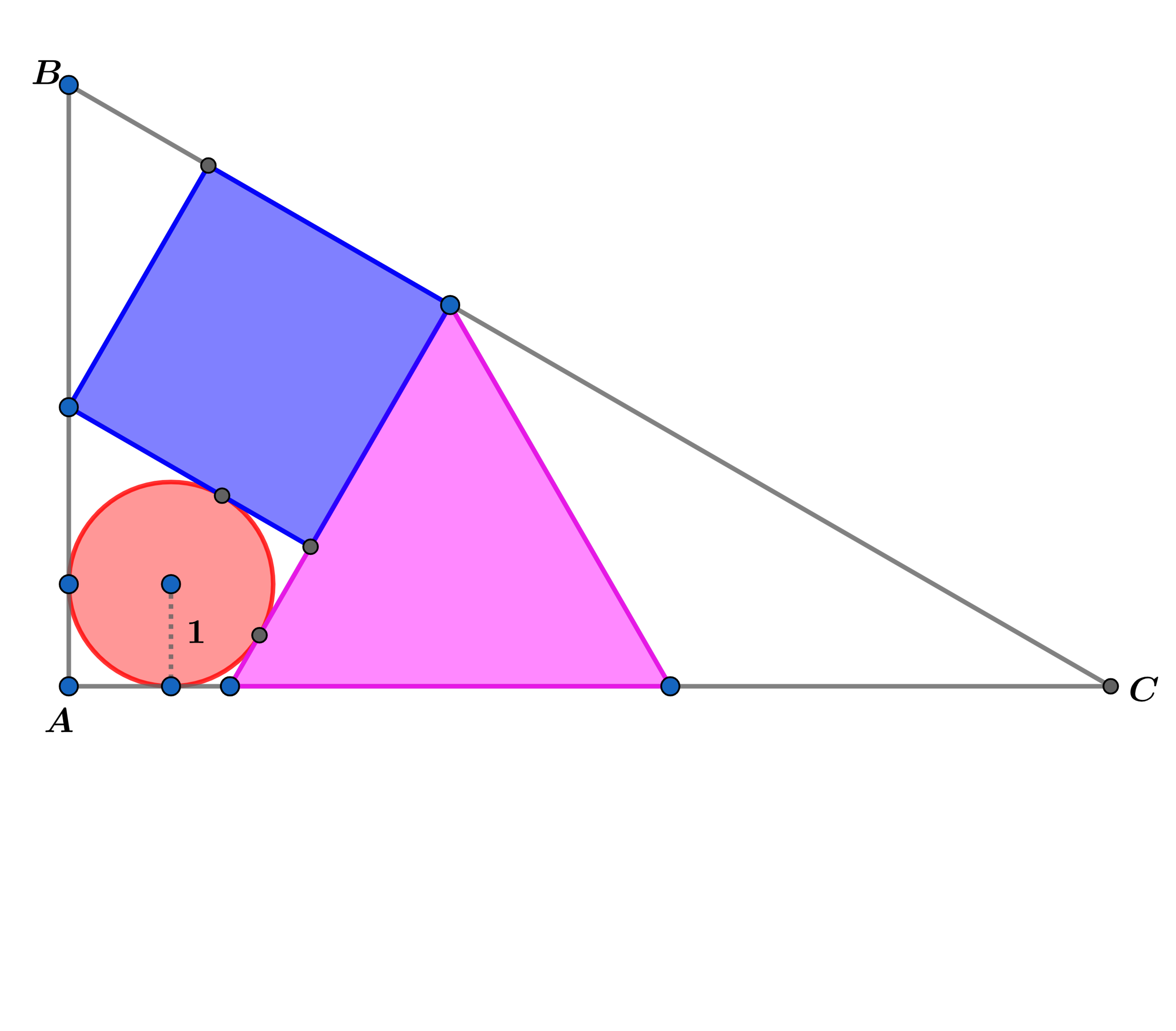Circle, square and equilateral triangle inscribed in a right triangle.

A unit circle, a square and an equilateral triangle are inscribed in right as shown above.
Let be the sum of the areas of the square and the equilateral triangle.
If , where and are coprime positive integers, find .
The answer is 40.
This section requires Javascript.
You are seeing this because something didn't load right. We suggest you, (a) try
refreshing the page, (b) enabling javascript if it is disabled on your browser and,
finally, (c)
loading the
non-javascript version of this page
. We're sorry about the hassle.
m ∠ K D I = 6 0 ∘ ⟹ m ∠ K D O = 3 0 ∘ ⟹ m ∠ D O K = 6 0 ∘
For △ K D O :
l = tan ( 6 0 ∘ ) = 3 ⟹ D E = 3 + 1 = E F ⟹
The area of the square A s = ( 3 + 1 ) 2 = 4 + 2 3
For △ J O G :
m ∠ H G J = 1 2 0 ∘ and m ∠ O J G = m ∠ O H G = 9 0 ∘ ⟹ m ∠ J O H = 6 0 ∘ in quadrilateral J O H G
⟹ m ∠ J O G = 3 0 ∘ ⟹ m ∠ J G O = 6 0 ∘ ⟹ n 1 = tan ( 6 0 ∘ ) = 3 ⟹
n = 3 1 = J G = H G ⟹ G F = E F + E H + H G = 3 + 2 + 3 1 =
3 4 + 2 3 ⟹ A △ G F M = 4 3 ( 3 4 + 2 3 ) 2 = 3 7 3 + 1 2 ⟹
A T = 3 1 3 3 + 2 4 = β α β + λ ⟹ α + β + λ = 4 0